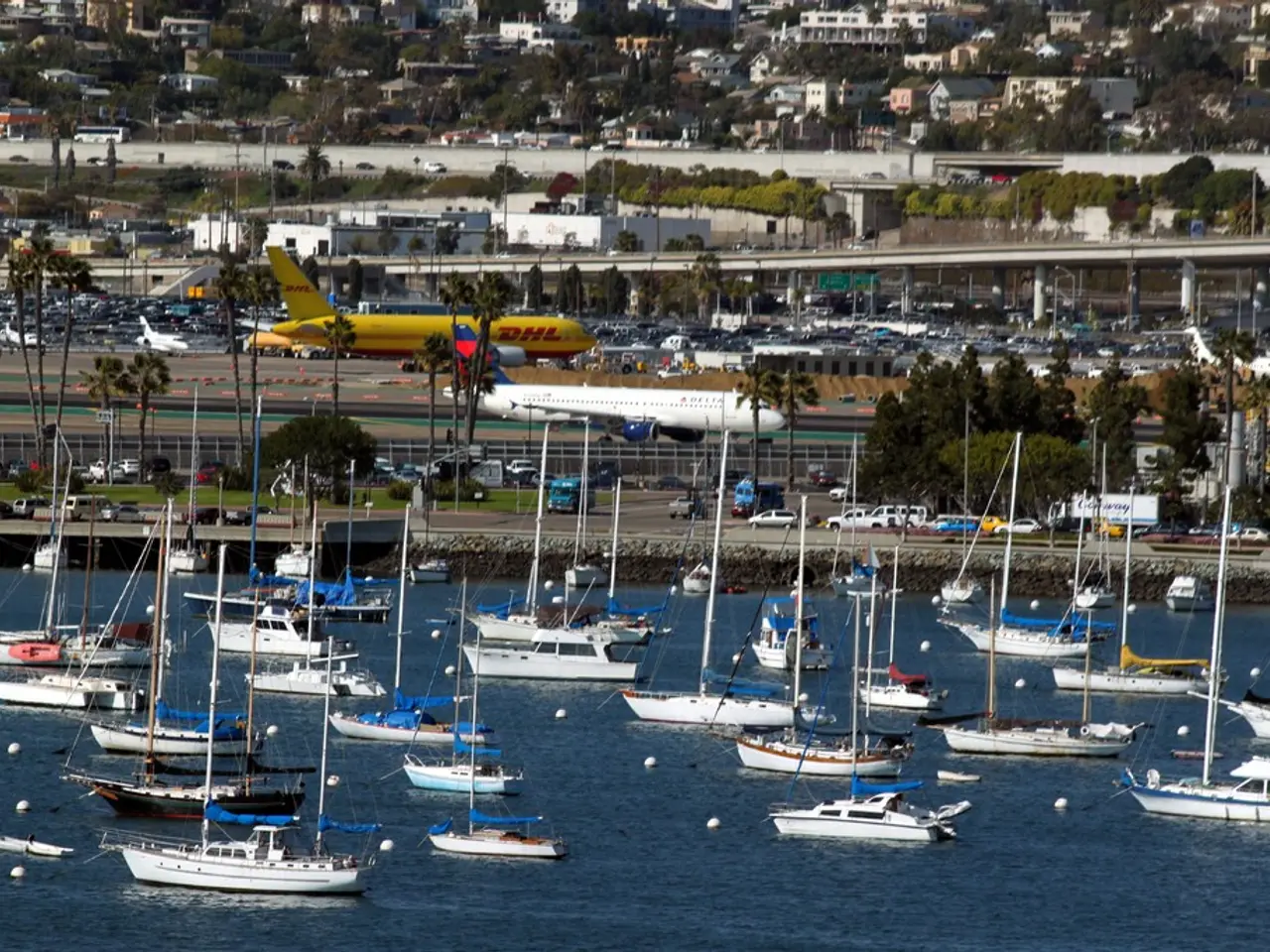High-capacity electric airplane slashes 10-hour journey down to mere minutes, marking a historical milestone.
In the world of logistics, a new player is making waves: heavy-lift drones. These innovative aircraft, combining the vertical lift of helicopters with the efficient cruise of fixed-wing planes, are revolutionising the industry, offering a middle ground between slow boats and expensive helicopters.
Leading this revolution is China, particularly the city of Shenzhen. Since 2023, Shenzhen has been operating a dense network of cargo drone sorties, totaling over 780,000 flights across 203 active routes and 121 takeoff/landing points. This scale demonstrates strong commercial viability, with applications ranging from rapid urban deliveries to cross-sea routes linking cities with efficient cargo transport.
One of the standout drones in Shenzhen's fleet is the V2000CG CarryAll, built by Shanghai-based Autoflight. This all-electric aircraft made history on July 22, 2025, when it completed the world's first offshore oil-platform cargo mission by a two-ton electric vertical-takeoff-and-landing aircraft. The Shenzhen-to-rig mission, which took 58 minutes, saw the V2000CG CarryAll transport fresh fruit and emergency medical supplies across open water. The aircraft, capable of hauling 400 kilograms and covering up to 124 miles on a single charge, promises lower operating costs, faster response, and the ability to land in confined spaces.
The V2000CG CarryAll's July 22 handover marked the first delivery of a fully certified large eVTOL in China, signalling a significant milestone in the country's drone logistics sector. The advances point to a logistics sector on the verge of rapid change.
Elsewhere, countries like Canada are also making strides in heavy-lift drone technology. The Canadian-developed Condor XL heavy-lift drone, capable of carrying up to 180 kg over 200 km, is designed for challenging logistical missions such as remote military supply routes or emergency medical aid.
However, regulatory landscape and integration challenges remain critical. Authorities like the U.S. FAA and Chinese Civil Aviation Administration (CAAC) are evolving frameworks to ensure safety and airspace coordination. While China advances with systems like UOMS for unmanned traffic management and development of airworthiness standards, international alignment involves compliance with Western regulations, reflecting a globalization of heavy-lift drone logistics standards.
In 2025, the heavy-lift drone market is projected to be worth approximately $1.4 billion by 2030, with a compound annual growth rate (CAGR) of 13.4% driven by demand in logistics, construction, infrastructure, and search and rescue. Technological innovations focus on greater autonomy enabled by artificial intelligence, extended flight times via improved energy storage and propulsion, and advanced sensor integration enhancing operational capabilities.
In conclusion, heavy-lift drone logistics in 2025 are characterised by mature commercial operations in China, emerging high-capacity drone programs internationally, robust market growth projections, and ongoing regulatory adaptation worldwide. As these drones continue to evolve and become more common, they are set to reshape the logistics industry, offering faster, cheaper, and cleaner alternatives to traditional methods.
- The innovation of heavy-lift drones, combining the advantages of helicopters and fixed-wing planes, is revolutionizing various sectors, from urban deliveries to cross-sea routes, due to their commercial viability and efficiency.
- China, particularly Shenzhen, has been leading the revolution in drone logistics, operating a vast network of cargo drone sorties, demonstrating strong commercial viability with over 780,000 flights across 203 active routes and 121 takeoff/landing points.
- Technology advancements in the drone industry, such as artificial intelligence, improved energy storage, and propulsion, are driving the market growth, with the heavy-lift drone market projected to be worth approximately $1.4 billion by 2030.
- Despite the progress made, regulatory challenges and the need for international alignment still pose critical issues for authorities like the FAA and CAAC, as they evolve frameworks to ensure safety and airspace coordination, reflecting the globalization of heavy-lift drone logistics standards.




